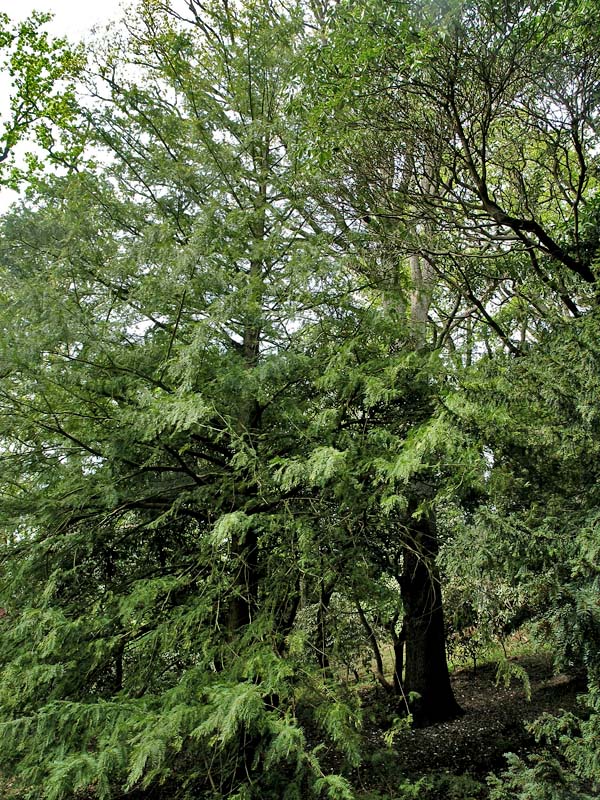| General Description | It is a tree native to California and was used in the past by indigenous people for medicinal and recreational uses such as curing indigestion, fever, pain and related symptoms. The very stiff, rigid needles were also used as the tool for producing tattoos. It is also known for its brown-purple to green coloured fruit nut that eatable and the unappealing smell produced by the needles. |
| ID Characteristic | Torreya californica has small pale yellow flowers, both male and female, produced in autumn. It has incredibly tough needles that produce quite an unpleasant odour, thus limiting its use in the cultivated landscape. |
| Shape | Upright pyramidal to irregular weeping bordering on the unkempt. |
| Landscape | Torreya californica is a unique tree and seldom sees use in the cultivated landscape due to it's seemingly unpleasant odour derived from the needles. California nutmeg has a somewhat purple to green fruit or nut that can be eaten and has been said to have a similar taste to peanuts. |
| Propagation | T. californica require a cold stratification of 3-4 months at 5°C before sowing, subsequent germination can take up to 26 months. In some cases germination has occurred without stratification. |
| Cultivation | Grows in a variety of soil conditions but prefers clay loam, clay loam or sandy loam soils with a pH ranging from 5.2-6.5. The tree can planted in either full or partial sun but must be protected from heavy or direct wind. |
| Pests | No known pests or disease problems of consequence. |
| Notable Specimens | There are notable specimens of the Torreya californica found growing naturally throughout the Sequoia National Park in the southern Sierra Nevada, east of Visalia, California, United States of America. Westonbirt, The National Arboretum, Tetbury, Gloucestershire, England.
|
| Habitat | California torreya is found in many plant communities that lie within two distinct geographic ranges. In its coastal ranges it is found growing in chaparral forests in association with Sequoia sempervirens, it is also found growing in mixed woods with Quercus chrysolepis and Umbellularia californica in inland and coastal foothills.
In its primary inland ranges it is found growing in association with Pinus ponderosa.
|
| Bark/Stem Description | The, 6-10 mm thick bark is best described as incredibly smooth and appealing until the tree matures at which point it becomes quite rough and begins to exfoliate. |
| Leaf Description | Torreya californica has thin, linear-lanceolate, dark green, needles that are opposite in arrangement covering the entire length of the branch. The foliage is quite infamous because of the unpleasant odour that the needles produce. |
| Flower Description | Male and female flower are quite similar in colour, both being a pale yellow. Male flowers are slightly smaller than the female blooms; blooms are about 10-15 mm in length. |
| Fruit Description | The 10-20 mm, fruit or nut as some would prefer to call it of Torreya californica is quite unique as it resembles a large grape, being light green-brown to purple with a dark yellow interior. |
| Colour Description | The colour is not the most outstanding or exceptional however when it flowers the faded pale yellow contrasts with the green foliage. The fruit is a brown to purple colour and when set in quantity can be quite attractive.. |
| Texture Description | It is a medium textured plant that does not change a great deal through the seasons. |
